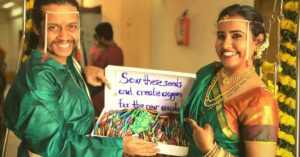How The Bride’s & Groom’s Moms Organised This No-Plastic Wedding, Composting 1000 kg Waste
Bengaluru mothers Anupama Harish and Charulatha R hosted a low-waste plastic-free wedding for their children that lasted three days. From using eco-friendly decor and steel utensils to arrangements for food waste to be composted, here’s how they did it.

In 2023, Anupama Harish and Charulatha R’s households in Bengaluru had an exciting start. They were over the moon as their children Ashutosh and Nidhi were getting married. In February, they finalised the date for the wedding, which was set for three months later. The families now had little time to prepare for the wedding.
As the families met to discuss wedding intricacies, the groom’s mother laid down one condition, which was non-negotiable — she wanted the wedding to be plastic-free.
“We were more than happy to accept Anupama’s condition,” says Charulatha, the bride’s mother in a conversation with The Better India.
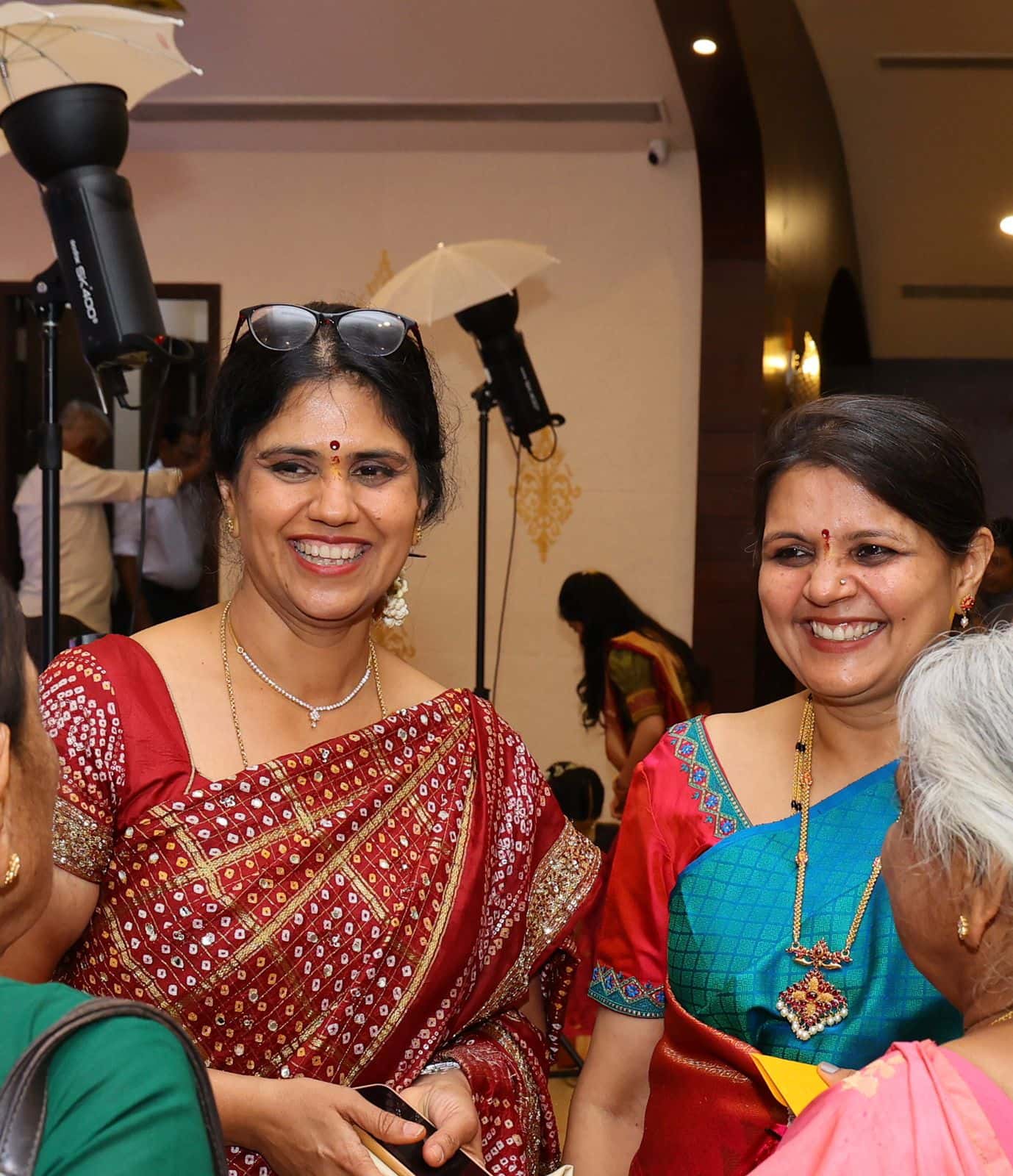
“Plastic litter has always bothered me. We already compost at home and I have a terrace garden where I use it. Even the engagement ceremony we arranged did not have plastic, so we gladly took up the challenge of having a plastic-free wedding,” she adds.
Anupama also took responsibility for handling the waste and ensuring that the wedding was plastic free. She mentions that half of the efforts required to successfully execute such a wedding should be done during the planning stage, beginning with the invitations.
Planning a plastic-free wedding
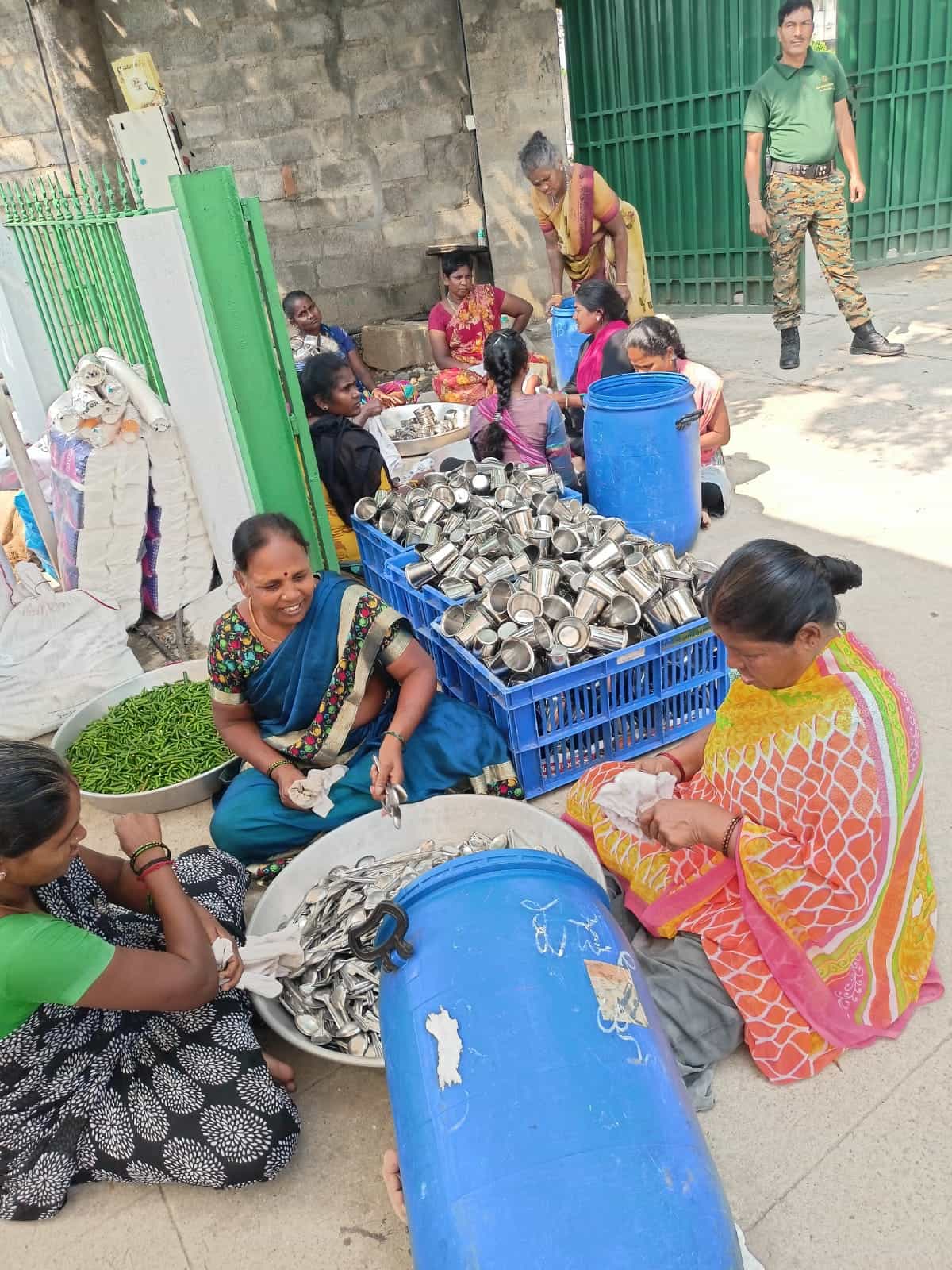
To reduce waste, both the bride and groom’s side printed minimum invitation cards, which carried the words: ‘We are attempting a minimum waste wedding. We sincerely request you to avoid bouquets and gift wrappers’.
Indian weddings are usually lavish and extravagant. If you visit any wedding venue after the festivities are over, you will find it strewn with plastic bottles, cups, and decoration items. As weddings get larger, so is the wastage.
One of the major waste producers in a wedding is food. According to an article in Ground Report, “An average Indian wedding generates about 200–300 kg of food waste which amounts to almost 20% of the food going to waste. Cumulatively, it amounts to $14 billion worth of meals.”
“We decided on a menu that would involve less cutlery and chose dishes accordingly. We also didn’t want any plastic cups or water bottles. We rented steel cutlery from Adamya Chetana, a free cutlery bank. Food was served on banana leaves. We only used steel plates for the reception,” says Anupama.
One would usually think that low-waste execution is only possible in small-scale weddings. But Anupama and Charulatha made sure the template worked for their big fat Indian wedding. They had more than 1,000 guests for the reception and muhurtam. Yet, no plastic waste was generated.
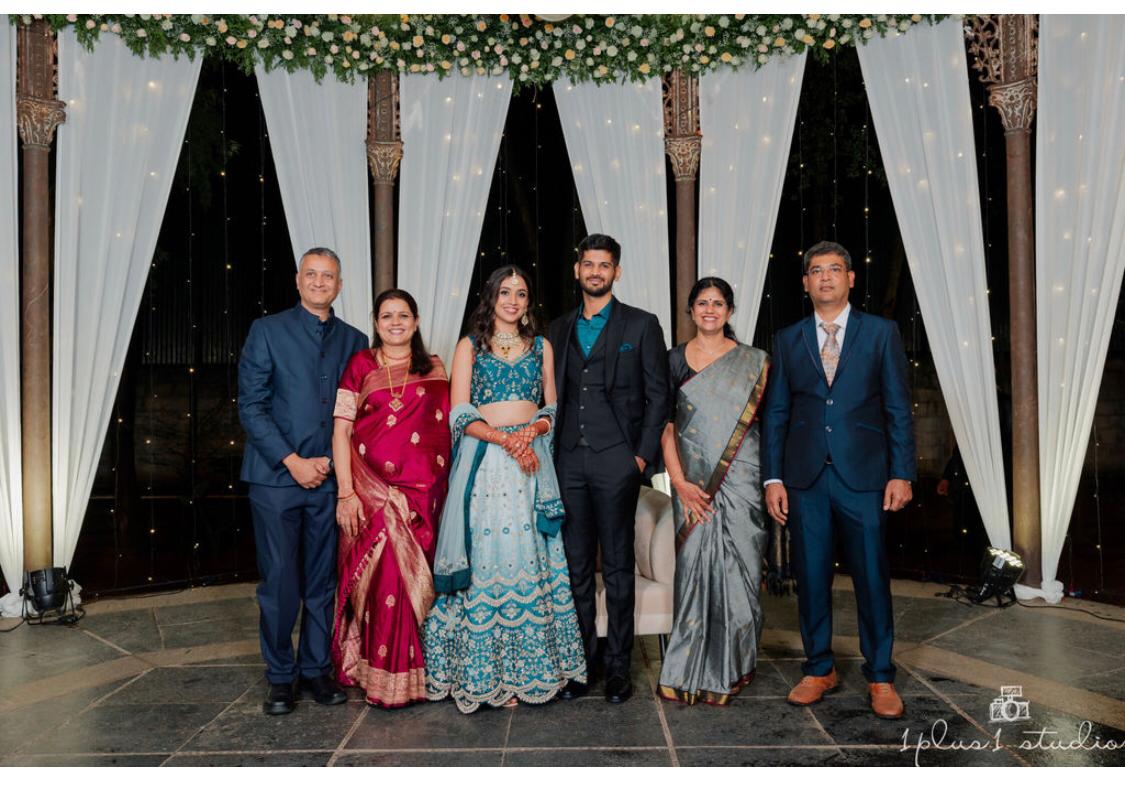
To ensure that no waste from the wedding ends up in the landfill, Anupama roped in her ‘composting guru’ Vasuki Iyengar to achieve this feat. A member of the Solid Waste Management Round Table (SWMRT) Bengaluru, Vasuki along with the six other members of the SWMRT team was in charge of handling all the waste from the wedding.
According to SWMRT, over 4,000 meals were served during the wedding, spread over three days.
This led to about 1,000 kg of wet waste, which was turned into 300 kg of compost later on.
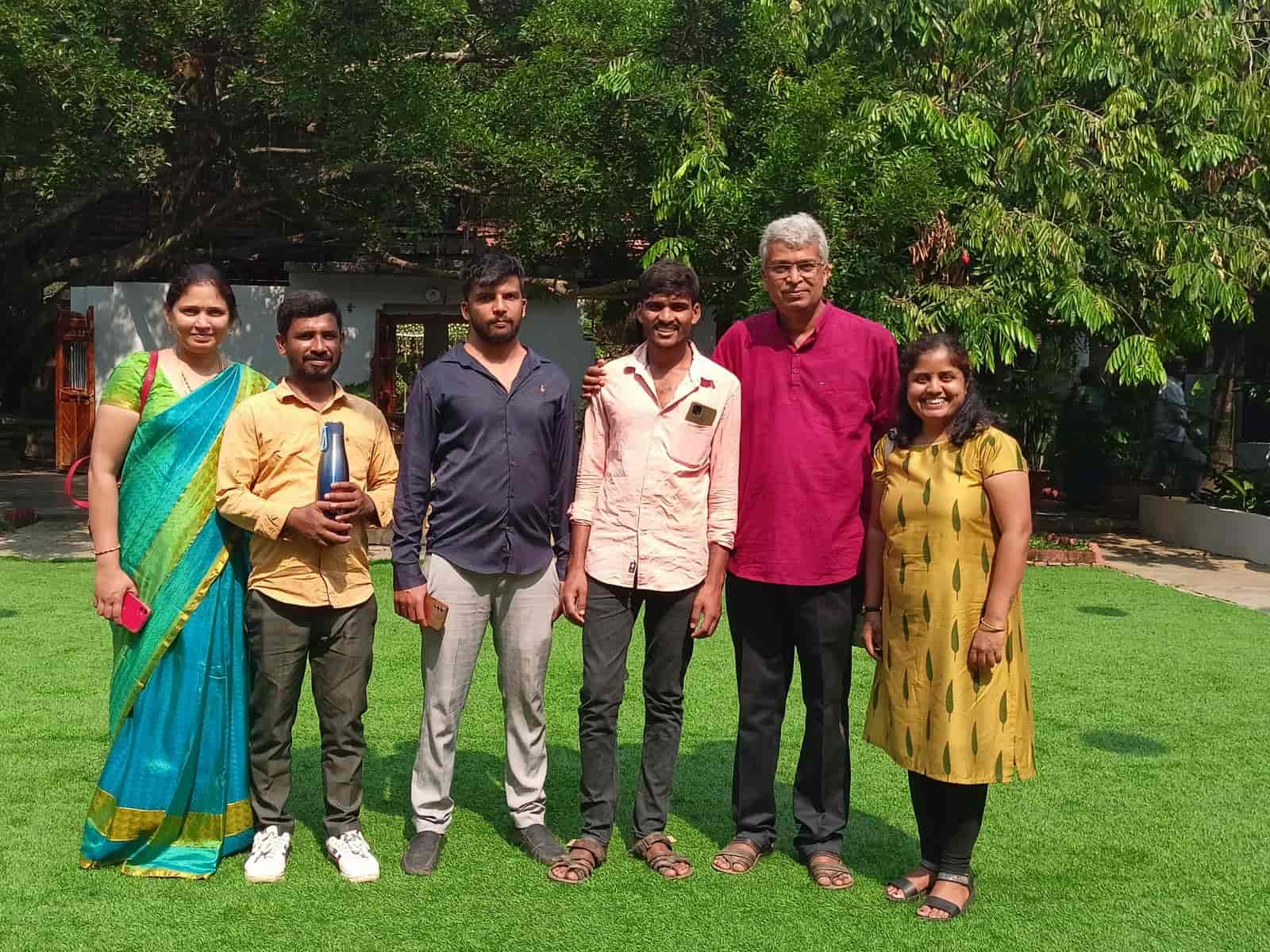
“Low-waste weddings are the need of the hour,” says Vasuki. “Biodegradable waste is usually mixed with plastic waste and dumped in landfills. So our team was present at the venue, and we placed drums filled with cocopeat to collect the waste. We instructed the kitchen, catering and cleaning staff to segregate the waste and put the wet waste in the drums. The paper and flower waste was sent to the collection centre.”
The wet waste collected from the wedding was composted at the Swachagraha Kalika Kendra.
He adds that by using steel cutlery, 30,000 single-use disposables were avoided.
Using 19-year-old butter paper for gifts

Another big aspect of Indian weddings is the gifts. While going through her attic, Anupama found a huge bundle of butter paper which she had stowed away after her son’s thread ceremony in 2004. She used that to pack the gifts for the guests.
“I gave everyone naturally dyed blouse pieces. Even if one doesn’t stitch it, they’ll definitely hand it over to someone else. I also used all the arishina kumkuma (turmeric and vermillion powder) that I had at home and packed them in papers,” says Anupama.
They also used only fresh flowers for decorations. Later on, the bride’s friends sent the flowers to a studio in Mumbai which used them as natural dyes and created clothes for the couple.
The mothers say that it’s easier to plan a no-plastic wedding. “It’s easier and cleaner. There is no waste lying around. The venue was clean all the time. One just needs to have the will to live a plastic-free life,” says Anupama, adding that if each wedding mandap starts having a dishwasher, so much waste can be reduced.
“You can have a cutlery bank of 50-100 utensils amongst your family and friends, and circulate it around. Isn’t this how our mothers and grandmothers lived? My wedding was effortlessly plastic-free; that’s how all events were conducted during my time. Today, we need to highlight such an event,” she shares.
Anupama and Charulatha inspire us to go back to living naturally, like our mothers and grandmothers did, for the sake of the environment. If you found our stories insightful, informative, or even just enjoyable, we invite you to consider making a voluntary payment to support the work we do at The Better India. Your contribution helps us continue producing quality content that educates, inspires, and drives positive change. Choose one of the payment options below for your contribution- By paying for the stories you value, you directly contribute to sustaining our efforts focused on making a difference in the world. Together, let’s ensure that impactful stories continue to be told and shared, enriching lives and communities alike. Thank you for your support. Here are some frequently asked questions you might find helpful to know why you are contributing?

Edited by Pranita Bhat
Sources
‘Environmental Cost of The Big Fat Indian Wedding’ by Palak Tripathi for Ground Report.
This story made me
-
97
-
121
-
89
-
167




